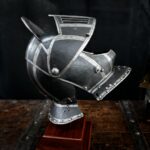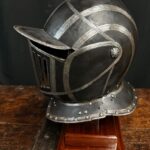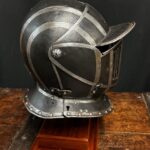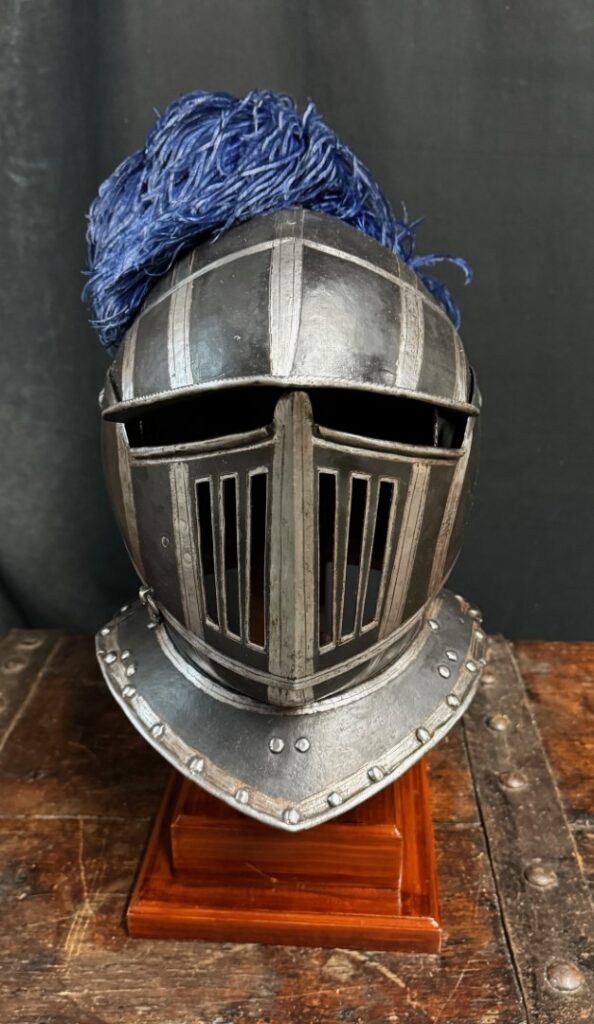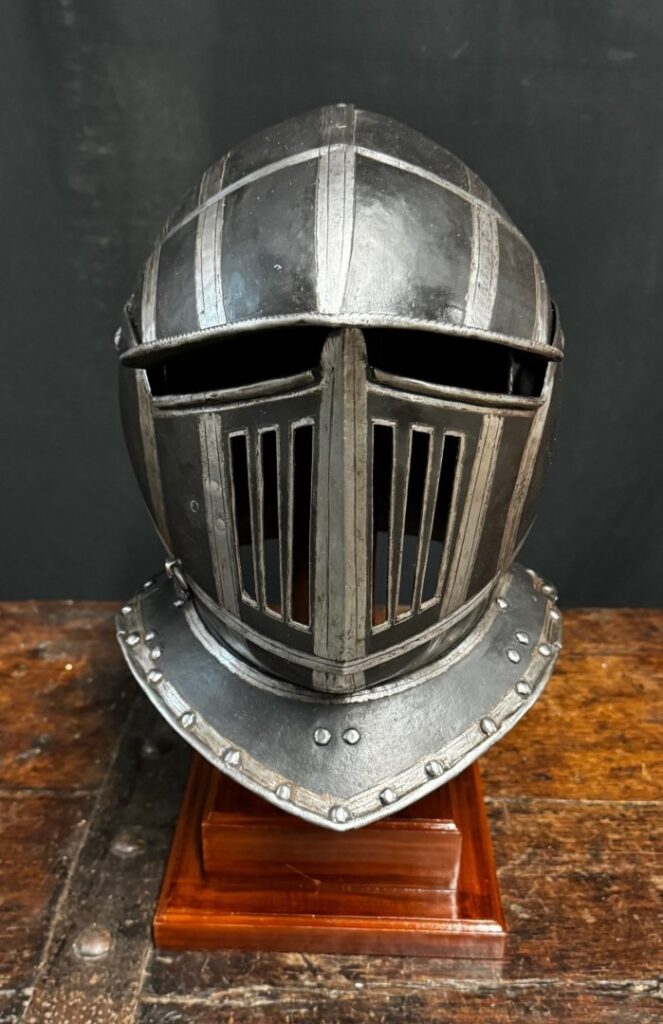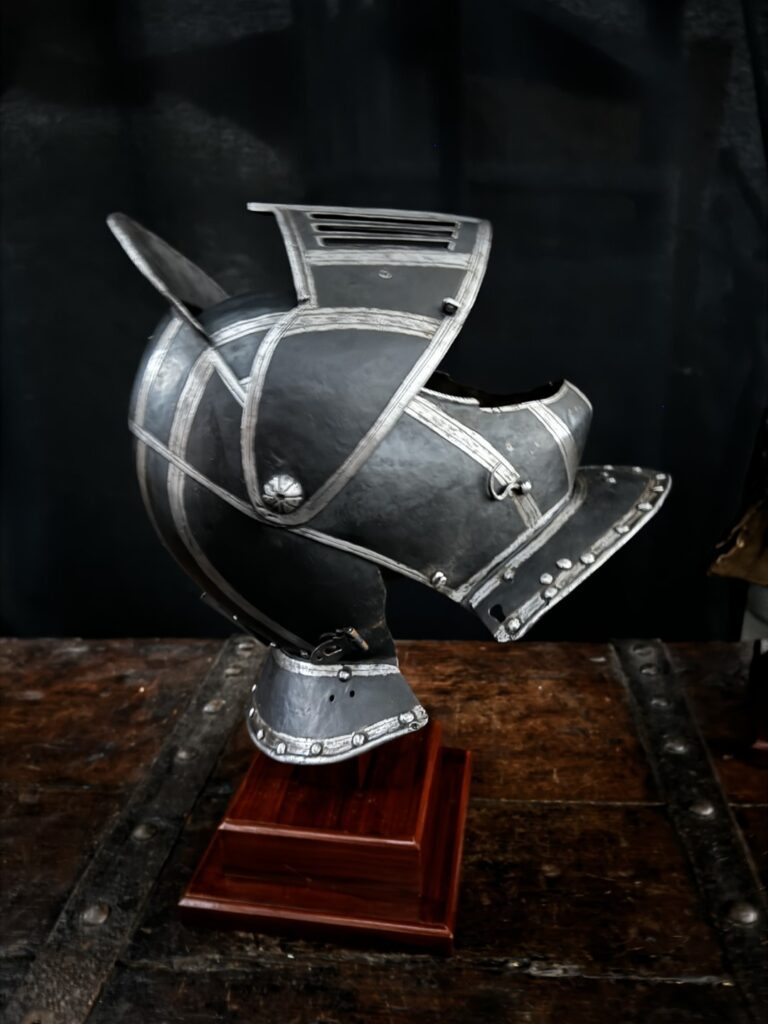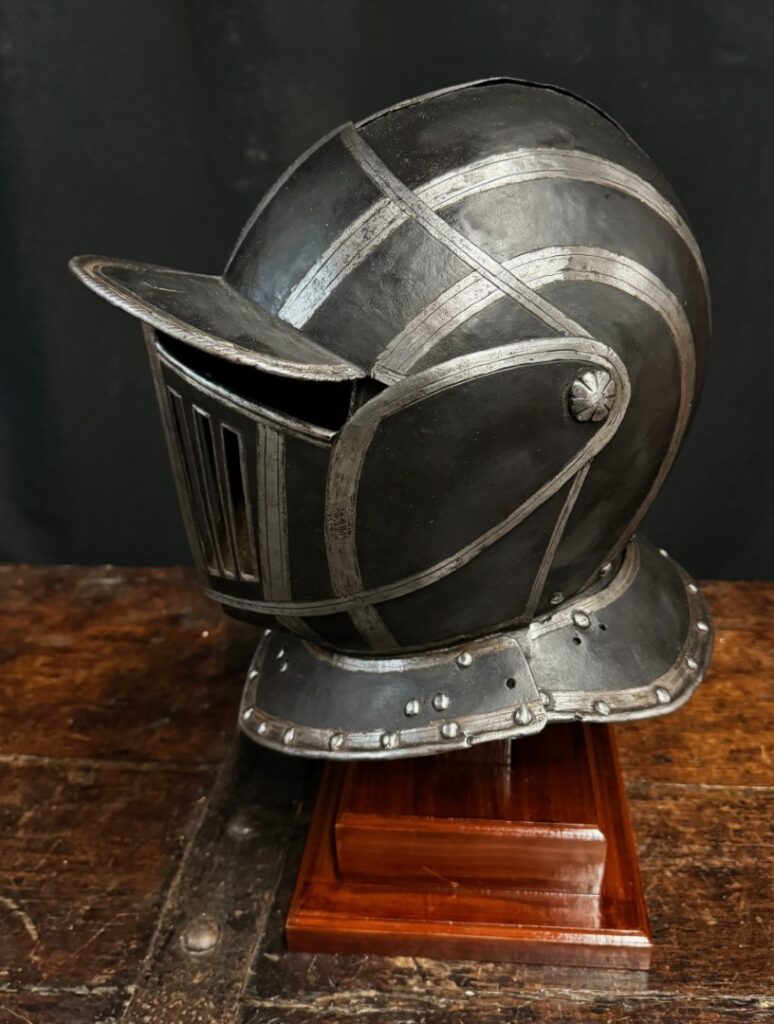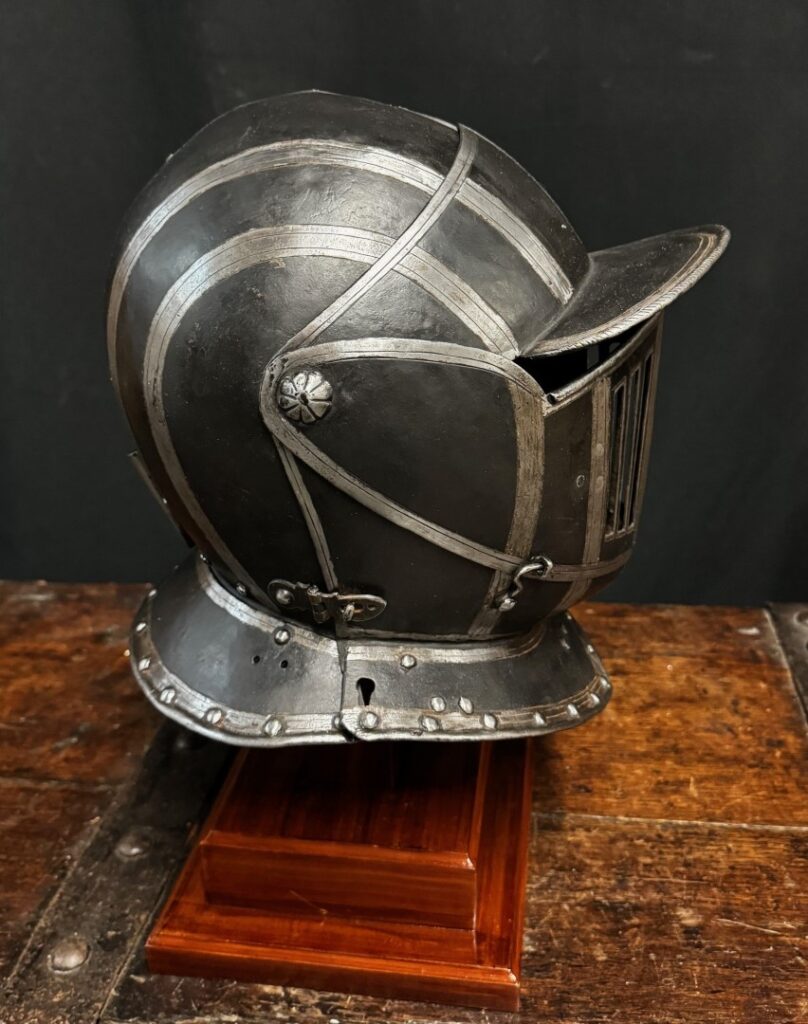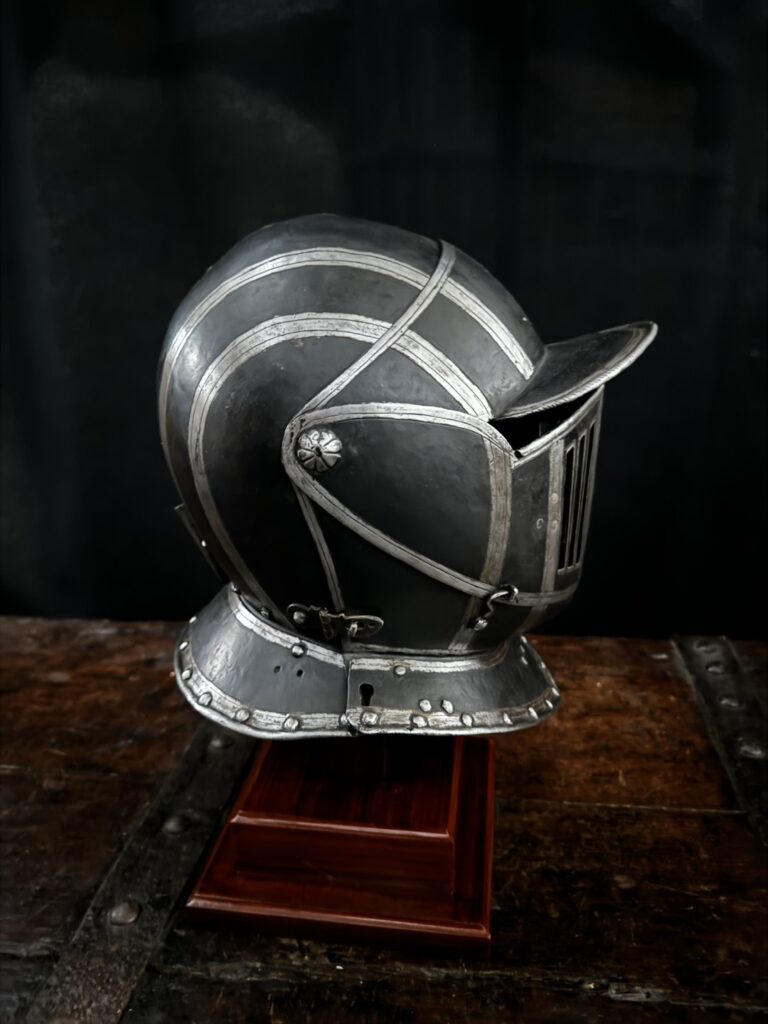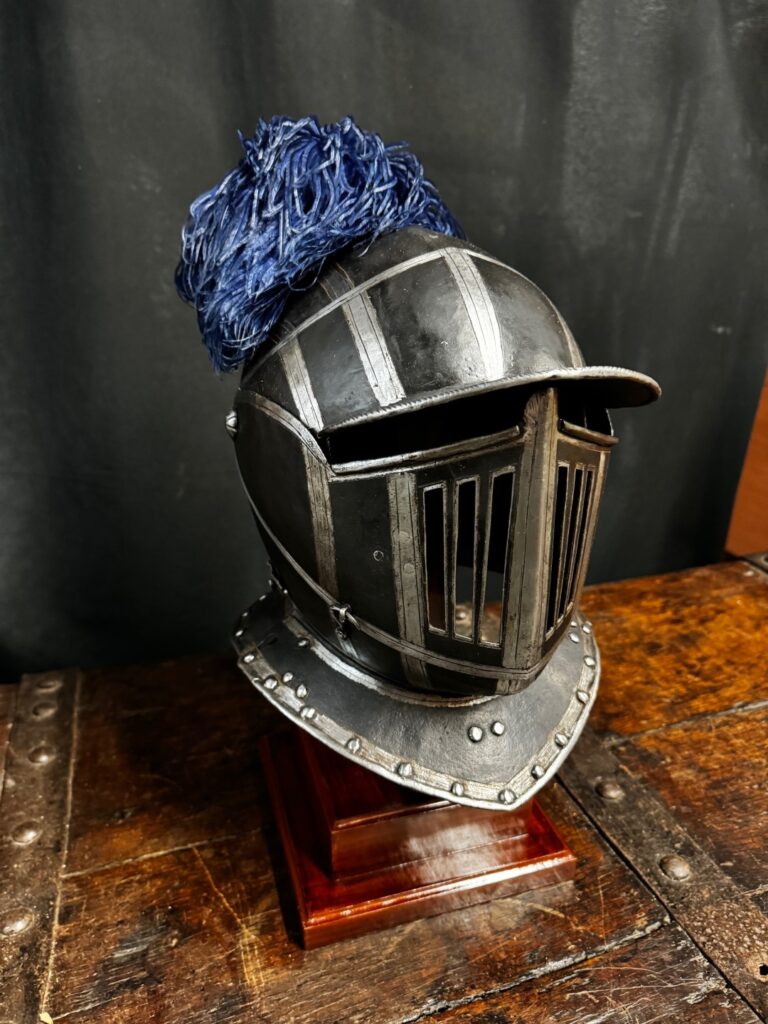1679) DECORATED CUIRASSIER HELMET CIRCA 1610 FROM AN ITALIAN ANCESTRAL COLLECTION: Imagine walking into a Villa in Southern Italy and seeing a room full of arms and armor from the same family for over 400 years! This helmet is 100% original as the day it was made. It has three pierced lines at the center extending from the visor tip, over the comb, and terminating at the nape and two lines at opposite sides also running vertically.
The most sought-after collectibles in armor are helmets. A helmet protects the most vital part of the knight’s body, the head. Helmets (especially close helmets), in general, are more expensive than any other part of armor. Why? Because helmets are the earliest form of body armor. Both aristocratic knights and simple infantrymen used them. Helmets are the most difficult item to make in a suit of armor. Because of their elegance, workmanship, and symbolism of power and chivalry, helmets are readily accepted by most as works of art, even by non-collectors.



